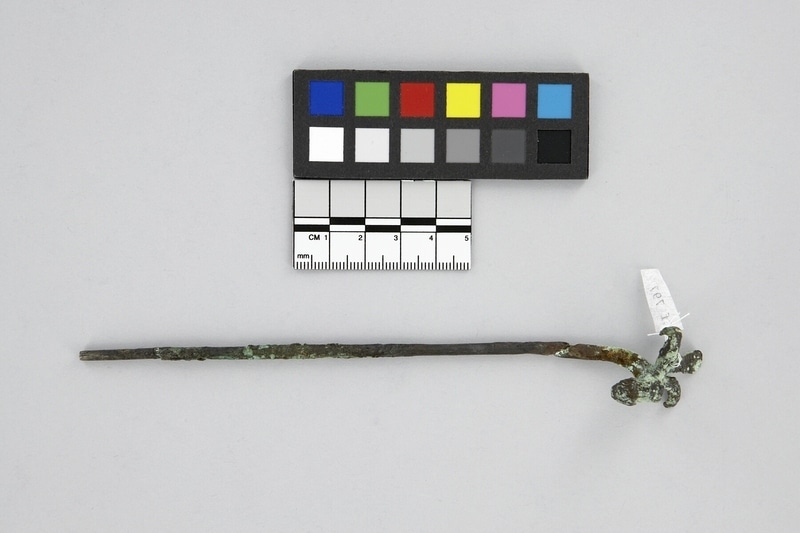Pin Item Number: Sf797 from the MOA: University of British Columbia

Description
A long shank of rolled sheet metal, joined to an irregular, cast finial. The finial has an oval, head-like form with two hooks that may represent horns, and a flattened, round protrusion between them. The metal is brownish/black. A third type of metal is introduced as a flux at the join. This yellowish metal has file marks.
History Of Use
May be a shawl pin, called tupu in Quechua. The hole to the side of the bird tail may have been for suspension when the pin was not stuck in the cloth. Vicus examples (Disselhoff) of pins frequently have decorative, cast heads in the form of various zoomorphic figures. Entire scenes are sometimes represented.
Iconographic Meaning
The finial is a combination of penis and scrotum surmounted by two bird heads and a single bird tail. This probably refers to the theme of a bound figure whose penis and eyes are pecked at by birds. This theme is frequently represented in Moche and Vicus art (Jones; Donnan). Donnan suggests this scene may represent punishment for a crime, possibly robbery.
Narrative
Vicus, Early Intermediate Period; 0-200 C.E.
Item History
What
- Name
- Pin
- Identification Number
- Sf797
- Type of Item
- pin
- Material
- copper metal
- Manufacturing Technique
- cast and hammered
- Overall
- height 17.1 cm, width 2.4 cm, depth 2.1 cm
Where
- Holding Institution
- MOA: University of British Columbia
- Made in
- Peru
When
- Creation Date
- during 200
- Collection Date
- between 1949 and 1966
- Ownership Date
- before May 4, 1981
- Acquisition Date
- on May 4, 1981
Other
- Item Classes
- metalwork
- Condition
- poor
- Accession Number
- 0711/0299